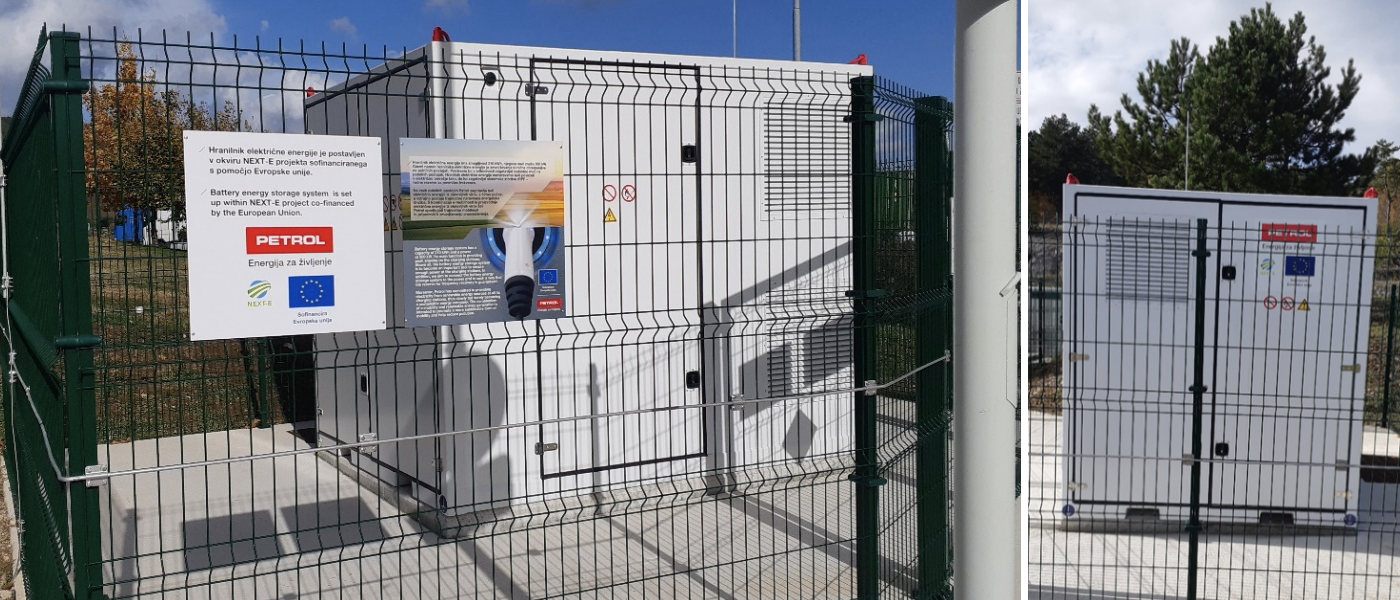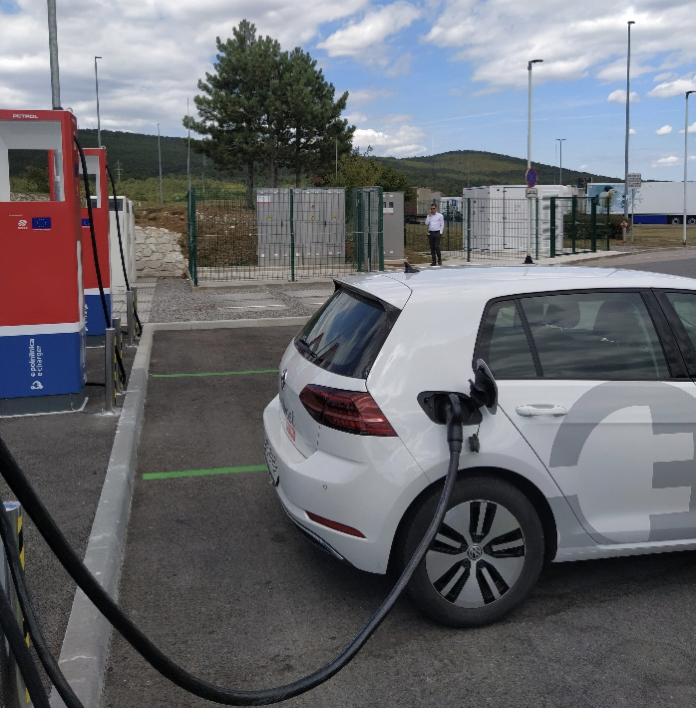« Back to Articles
The number of those who believe in the e-future and understand the importance of sustainable transport has been increasing steadily. Petrol is here to support them with its range of e-mobility services, one of them being the deployment of the pilot battery energy storage system in Kozina, which will make travelling by electric cars even easier.
Petrol knows that the future lies in electricity and that we need to take action today to ensure a better tomorrow. To this end, Petrol has been actively involved in establishing electric road transport since 2012. In line with its commitment to ensuring a sustainable progress, Petrol has a key role in making e-mobility widely available in Slovenia.
This includes ensuring access to the electric charging infrastructure.
Enough power for fast and carefree EV-charging
We all want to charge our electric cars as fast as possible, regardless of the location. To do so, we need convenient access to fast and ultra-fast chargers. This is where things may get complicated for charging service providers. Namely, the locations where it would be reasonable to deploy fast (power of 150 kW) and ultra-fast chargers (power of 350 kW) usually don’t ensure sufficient power from the grid, especially if we want to deploy more than one charging station and offer expected service to EV drivers.
The missing power at such locations can then be additionally provided by a battery energy storage system, which enables worry-free storage and flexible transmission of electricity to the charging stations.

Picture 1: Baterry energy storage system deployed at service station Kozina in Slovenia by Petrol
Faced with such challenge at the service station in Kozina, Petrol has decided to test the solution in the context of a pilot project as a part of the NEXT-E action, co-financed by the Connecting Europe Facility of the European Union and deployed a battery energy storage system in relation to 1 fast and 1 ultra-fast charger. The storage system has a capacity of 210 kWh with a power of 300 kW and is aimed to provide peak shaving on the charging stations. The energy storage system can also provide the mFRR (manual Frequency Restoration Reserve) system service that helps to keep the grid frequency stable. This means that the energy storage system can be activated whenever a major deviation from the nominal grid frequency occurs in the grid (sudden system imbalance occurrence). The battery energy storage system with his power may substitute part of the used power reserve for the automatic frequency recovery process and thus helping to establish a normal state at frequency regulation.

Picture 2: Battery storage in relation to 1 fast and 1 ultra-fast charger at the service station Kozina in Slovenia
This pilot project should give important information about the interaction between the battery energy storage system and charging stations as well as its impact on the grid. Based on findings and learnt lessons, Petrol will be able to offer even better e-mobility solutions and business models to its users, thereby writing a new future of road transport in Slovenia.
More sustainable mobility
But this is not the only step towards a green future that Petrol has made.
Petrol ensures electricity from renewable sources at all of its charging stations, thereby slowly but surely working towards securing its role as a sustainable energy company. Petrol is proud to say that by ensuring a combination of e-mobility and renewable electricity generation, it promotes a more sustainable mobility and helps reduce environmental pollution.
Petrol knows that the future lies in electricity and that we need to take action today to ensure a better tomorrow. To this end, Petrol has been actively involved in establishing electric road transport since 2012. In line with its commitment to ensuring a sustainable progress, Petrol has a key role in making e-mobility widely available in Slovenia.
This includes ensuring access to the electric charging infrastructure.
Enough power for fast and carefree EV-charging
We all want to charge our electric cars as fast as possible, regardless of the location. To do so, we need convenient access to fast and ultra-fast chargers. This is where things may get complicated for charging service providers. Namely, the locations where it would be reasonable to deploy fast (power of 150 kW) and ultra-fast chargers (power of 350 kW) usually don’t ensure sufficient power from the grid, especially if we want to deploy more than one charging station and offer expected service to EV drivers.
The missing power at such locations can then be additionally provided by a battery energy storage system, which enables worry-free storage and flexible transmission of electricity to the charging stations.

Picture 1: Baterry energy storage system deployed at service station Kozina in Slovenia by Petrol
Faced with such challenge at the service station in Kozina, Petrol has decided to test the solution in the context of a pilot project as a part of the NEXT-E action, co-financed by the Connecting Europe Facility of the European Union and deployed a battery energy storage system in relation to 1 fast and 1 ultra-fast charger. The storage system has a capacity of 210 kWh with a power of 300 kW and is aimed to provide peak shaving on the charging stations. The energy storage system can also provide the mFRR (manual Frequency Restoration Reserve) system service that helps to keep the grid frequency stable. This means that the energy storage system can be activated whenever a major deviation from the nominal grid frequency occurs in the grid (sudden system imbalance occurrence). The battery energy storage system with his power may substitute part of the used power reserve for the automatic frequency recovery process and thus helping to establish a normal state at frequency regulation.

Picture 2: Battery storage in relation to 1 fast and 1 ultra-fast charger at the service station Kozina in Slovenia
This pilot project should give important information about the interaction between the battery energy storage system and charging stations as well as its impact on the grid. Based on findings and learnt lessons, Petrol will be able to offer even better e-mobility solutions and business models to its users, thereby writing a new future of road transport in Slovenia.
More sustainable mobility
But this is not the only step towards a green future that Petrol has made.
Petrol ensures electricity from renewable sources at all of its charging stations, thereby slowly but surely working towards securing its role as a sustainable energy company. Petrol is proud to say that by ensuring a combination of e-mobility and renewable electricity generation, it promotes a more sustainable mobility and helps reduce environmental pollution.


